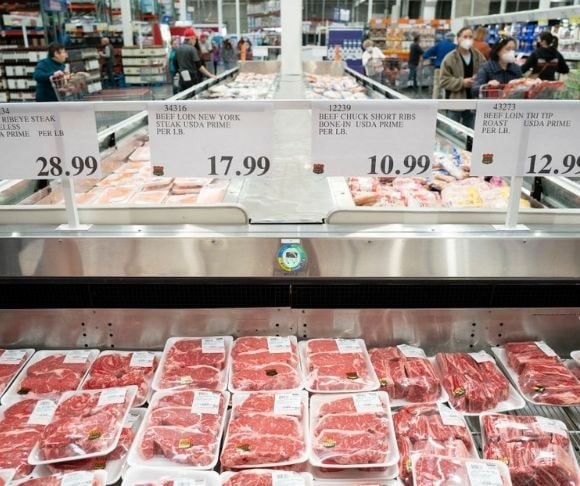Sure, the cost of televisions is down 14.4%, but the price of eggs is up 60%. Family budgets are being eaten alive by soaring food prices, whether it is a loaf of bread or baby formula. In December, the annual food inflation rate clocked in at 10.4%, with supermarket prices climbing 11.8% year-over-year. Perhaps Cardi B is right: It is cheaper to eat at a restaurant nowadays! So, what will household grocery budgets look like over the next year? The forecasts are a mixed shopping bag. Everyone may need to listen to President Joe Biden and change their brand of raisin bran cereal.
Food Prices in 2023
 The US Department of Agriculture (USDA) released its latest estimates for food prices in 2023. Researchers project that all food prices could climb as much as 10.1% this year, with the upper predictions for supermarket and restaurant prices clocking in at 11.7% and 9.7%, respectively. But even the lower ranges of these projections are not great: 4.2% (overall food), 6.7% (food at home), and 4.5% (food away from home).
The US Department of Agriculture (USDA) released its latest estimates for food prices in 2023. Researchers project that all food prices could climb as much as 10.1% this year, with the upper predictions for supermarket and restaurant prices clocking in at 11.7% and 9.7%, respectively. But even the lower ranges of these projections are not great: 4.2% (overall food), 6.7% (food at home), and 4.5% (food away from home).
Shoppers could endure more pain in their wallets for specific items and enjoy relief for others. For example, eggs are expected to surge between 6.9% and 52% in the upcoming year. Dairy products are anticipated to climb in the range of 1.1% and 15.5%. The category of meats, poultry, and fish is mixed:
- Beef and veal: -10.4% to +8%
- Pork: -10.3% to +5.1%
- Poultry: -0.3% to +8%
- Fish and Seafood: -1.7% to +6.3%
Meanwhile, most other kitchen staples are expected to increase, with fats and oil anticipated to rise at least 9.5%. Cereals and bakery products are being penciled in with a minimum boost of 7.8%. Sugar and sweets could increase between 6.6% and 14.7%, while non-alcoholic beverages might jump as high as 12.9%. The USDA’s lower-bound estimates for fresh fruits and vegetables are -7.5% and -3.3%, respectively. Its upper-bound projections are 4.5% and 14.6%, respectively.
A broad array of factors has contributed to higher food prices: surging input costs (diesel, feed, fertilizer, and labor), weather, disease, geopolitical conflict, inflation (currency depreciation), and transportation issues. Unfortunately, most of these matters will not disappear in 2023, although they might dissipate over the next 12 months. The Federal Reserve’s quantitative tightening campaign is also playing a role in skyrocketing food prices. Farmers are struggling to repay larger loans and make capital investments. This means households will pay more for bread (+15.9%), butter (+31.4%), eggs, lettuce (+24.9%), and various other products typically found in the refrigerator and pantry.
Farmers and Shoppers Struggling

(Photo by Liu Guanguan/China News Service/VCG via Getty Images)
“The fact that the food prices are going down does not mean this crisis is anywhere near being over. We’re looking at some difficult times,” said Cindy McCain, the US ambassador to the UN’s food and agriculture agencies in Rome, in a statement. “It’s the worst food crisis and the worst humanitarian crisis since World War II.”
Last month, the True Cost of a Grocery Shop survey conducted by Swiftly revealed that 69% of shoppers are struggling to keep up with their grocery bills. It showed that 83% are using coupons, 74% are altering their supermarket buying habits, and 33% are shopping more in the store than years past. Other reports have highlighted a growing number of consumers turning to debt instruments, from credit cards to buy-now-pay-later (BNPL) programs, to pay for their groceries. At the same time, Fox News recently reported on farmers facing surging production costs and lower harvest yields, while many others are selling off their animals. These are dangerous trends because when there is scarcity, there will be higher prices. Therefore, food inflation remains and will continue to be a problem for a long time.




